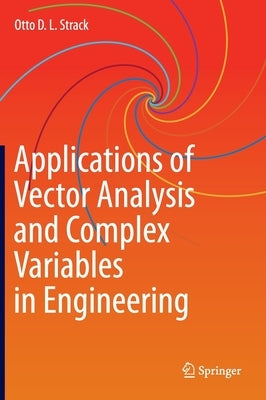Before you leave...
Take 20% off your first order
20% off
Enter the code below at checkout to get 20% off your first order
Discover summer reading lists for all ages & interests!
Find Your Next Read

The defining properties of vector fields, the divergence and curl, are introduced in terms of fluid mechanics. The integral theorems of Gauss (the divergence theorem), Stokes, and Green are introduced also in the context of fluid mechanics. The final application of vector analysis consists of the introduction of non-Cartesian coordinate systems with straight axes, the formal definition of vectors and tensors. The stress and strain tensors are defined as an application.
Partial differential equations of the first and second order are discussed. Two-dimensional linear partial differential equations of the second order are covered, emphasizing the three types of equation: hyperbolic, parabolic, and elliptic. The hyperbolic partial differential equations have two real characteristic directions, and writing the equations along these directions simplifies the solution process. The parabolic partial differential equations have two coinciding characteristics; this gives useful information regarding the character of the equation, but does not help in solving problems. The elliptic partial differential equations do not have real characteristics. In contrast to most texts, rather than abandoning the idea of using characteristics, here the complex characteristics are determined, and the differential equations are written along these characteristics. This leads to a generalized complex variable system, introduced by Wirtinger. The vector field is written in terms of a complex velocity, and the divergence and the curl of the vector field is written in complex form, reducing both equations to a single one.
Complex variable methods are applied to elliptical problems in fluid mechanics, and linear elasticity.
The techniques presented for solving parabolic problems are the Laplace transform and separation of variables, illustrated for problems of heat flow and soil mechanics. Hyperbolic problems of vibrating strings and bars, governed by the wave equation are solved by the method of characteristics as well as by Laplace transform.
The method of characteristics for quasi-linear hyperbolic partial differential equations is illustrated for the case of a failing granular material, such as sand, underneath a strip footing.
The Navier Stokes equations are derived and discussed in the final chapter as an illustration of a highly non-linear set of partial differential equations and the solutions are interpreted by illustrating the role of rotation (curl) in energy transfer of a fluid.
Dr. Strack received his PhD from the Technical University of Delft, the Netherlands, in 1973. He joined the Department of Civil Engineering of the University of Minnesota in 1974, where he is currently a professor. Dr. Strack is the original developer of the Analytic Element Method, which is a popular method in groundwater modeling. He is the author of the textbook Groundwater Mechanics (Prentice-Hall, 1989) and the textbook Analytical Groundwater Mechanics (Cambridge University Press, 2017), and a chapter on basic groundwater flow equations in Wiley's forthcoming Water Encyclopedia. He has authored 44 refereed papers in major journals, is the third recipient of the Lifetime Achievement Award, granted by the Minnesota Groundwater Association, and is a correspondent (foreign member) of the Royal Dutch Academy of Sciences. He is the author of the computer programs SLAEM and MLAEM, used for describing groundwater flow.
Professor Strack has taught groundwater flow and mathematics for engineers for over 45 years and has many years of experience as a consultant.
Thanks for subscribing!
This email has been registered!
Take 20% off your first order
Enter the code below at checkout to get 20% off your first order